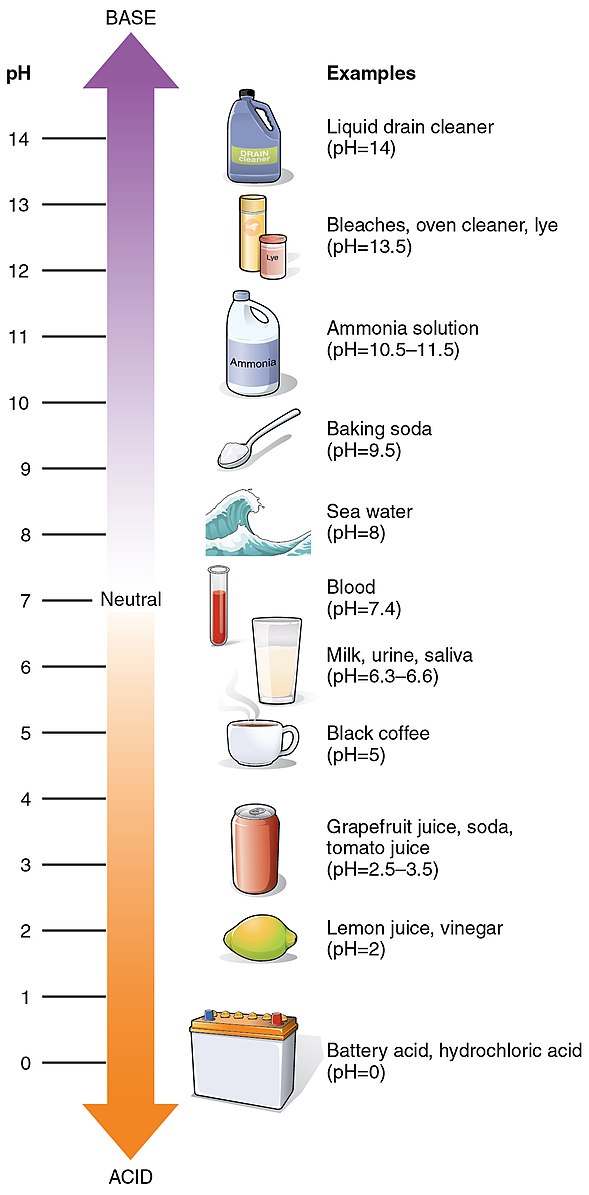The pH level of algae water is a crucial factor to consider for DIY users who want to maintain a thriving aquatic ecosystem. Algae can thrive in a wide range of pH levels, but most prefer a slightly alkaline environment with a pH between 8.2 and 8.7. Understanding the impact of pH on algae growth and the overall health of the aquatic environment is essential for creating a balanced and sustainable system.
Understanding the pH Range for Algae Growth
Algae, like most aquatic organisms, have specific pH preferences for optimal growth and survival. While some species can tolerate a broader range of pH levels, most algae tend to thrive in slightly alkaline conditions. Here’s a breakdown of the pH ranges and their impact on algae:
- Acidic pH (below 7): Blue-green algae (Cyanophyta) are completely absent from habitats with a pH lower than 4 or 5, while eukaryotic algae may still flourish in such environments.
- Neutral pH (around 7): Many algae species can grow well in a neutral pH range, but they may not reach their full potential.
- Alkaline pH (above 7): Most algae prefer a slightly alkaline environment, with a pH range between 8.2 and 8.7 being the ideal for many species.
- Highly Alkaline pH (above 10): When algae grow rapidly, they can consume dissolved carbon dioxide, causing the pH to rise rapidly, even up to 10 or 11. This can create an imbalance in the aquatic ecosystem and potentially harm other organisms.
Factors Affecting the pH of Algae Water
 Image source: OpenStax College
Image source: OpenStax College
The pH level in algae water can be influenced by various factors, including contaminants, chemicals, and substances present in the water. Understanding these factors is crucial for maintaining a healthy aquatic environment.
Contaminants and Pollutants
Contaminants such as heavy metals, nutrients, and organic matter can be introduced into the water through sources like agricultural runoff, wastewater discharge, and atmospheric deposition. These contaminants can affect the pH level and the overall health of the aquatic environment.
Chemical Interactions
The addition of chemicals or substances, either intentionally or unintentionally, can also impact the pH level of algae water. For example, adding acid or a base can help lower or raise the pH level, respectively. However, it is essential to do so carefully and in small quantities to avoid shocking the system and causing harm to the aquatic organisms.
Aquatic Plant Growth
Aquatic plants can play a significant role in regulating the pH level in algae water. As plants grow, they can absorb nutrients and heavy metals, which can help reduce the pH level and create a healthier environment for algae and other aquatic organisms.
Balancing the pH in Algae Water
Maintaining the proper pH level in algae water is crucial for the health and survival of aquatic organisms. DIY users can employ various methods to balance the pH level, including:
-
Chemical Adjustments: Adding chemicals or substances that can lower or raise the pH level, such as acids or bases, can help balance the pH. However, it is essential to do so carefully and in small quantities to avoid shocking the system.
-
Aquatic Plant Cultivation: Promoting the growth of aquatic plants can help regulate the pH level by absorbing nutrients and heavy metals from the water.
-
Home Remedies: Using home remedies, such as baking soda or vinegar, can help raise or lower the pH level, respectively. However, it is crucial to use these remedies in moderation and with caution.
Monitoring and Maintaining pH Levels
Regular monitoring of the pH level in algae water is essential for maintaining a healthy aquatic environment. DIY users should test the pH level frequently and make adjustments as needed to ensure the optimal range for algae growth and the overall ecosystem’s well-being.
By understanding the importance of pH in algae water, DIY users can create a thriving and balanced aquatic environment that supports the growth and survival of algae and other aquatic organisms.
References:
- Harmful Algal Bloom Water Quality | Everything You Need To Know – YSI. (n.d.). Retrieved April 27, 2024, from https://www.ysi.com/ysi-blog/2016/09/har
- Lower pH limit for the existence of blue-green algae – PubMed. (n.d.). Retrieved April 27, 2024, from https://pubmed.ncbi.nlm.nih.gov/4196167/
- Does Pool Algae Like High Or Low PH? – Classic Marcite. (n.d.). Retrieved April 27, 2024, from https://classicmarcite.com/does-pool-algae-like-high-or-low-ph/
- Do algae grow at high pH? – BYJU’S. (n.d.). Retrieved April 27, 2024, from https://byjus.com/question-answer/does-algae-grow-at-high-ph/
- Effects of pH on algal abundance: A model of Bay Harbor, Michigan. (n.d.). Retrieved April 27, 2024, from https://deepblue.lib.umich.edu/bitstream/handle/2027.42/57443/Bergstrom_McKeel_Patel_2007.pdf?sequence=1
- Algae Culture and pH. (n.d.). Retrieved April 27, 2024, from https://algaeresearchsupply.com/pages/algae-culture-and-ph.
